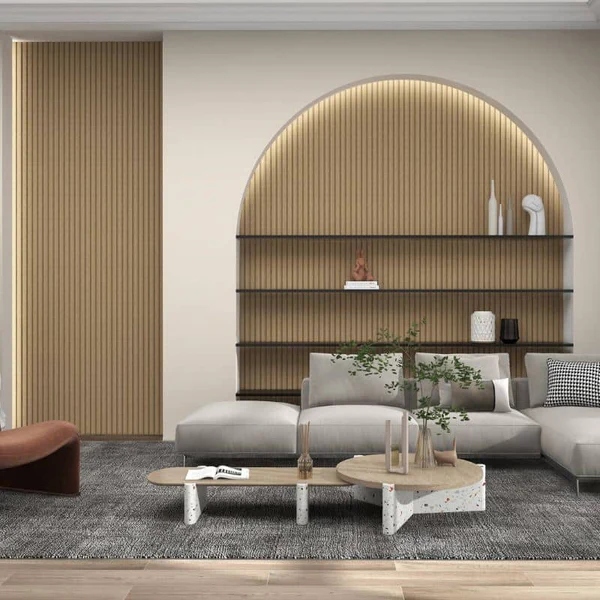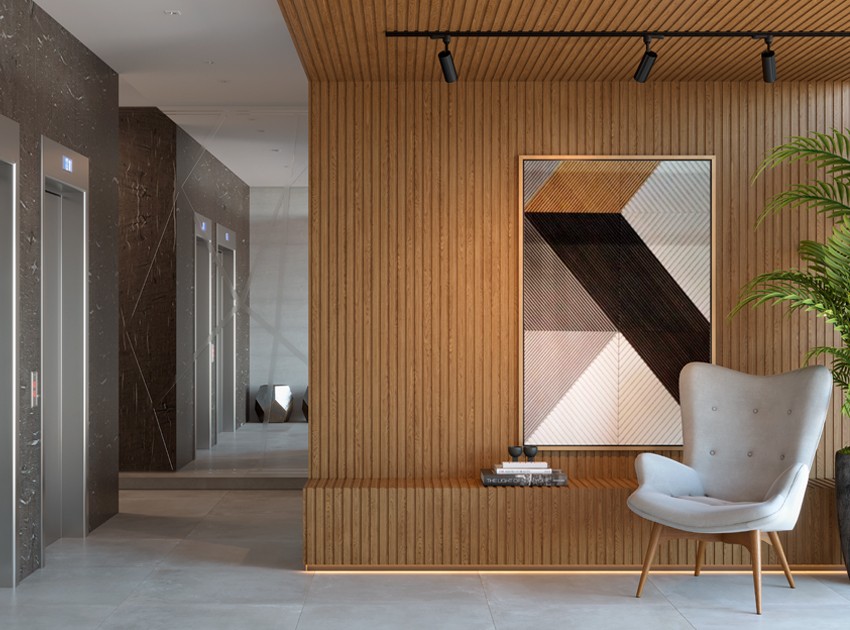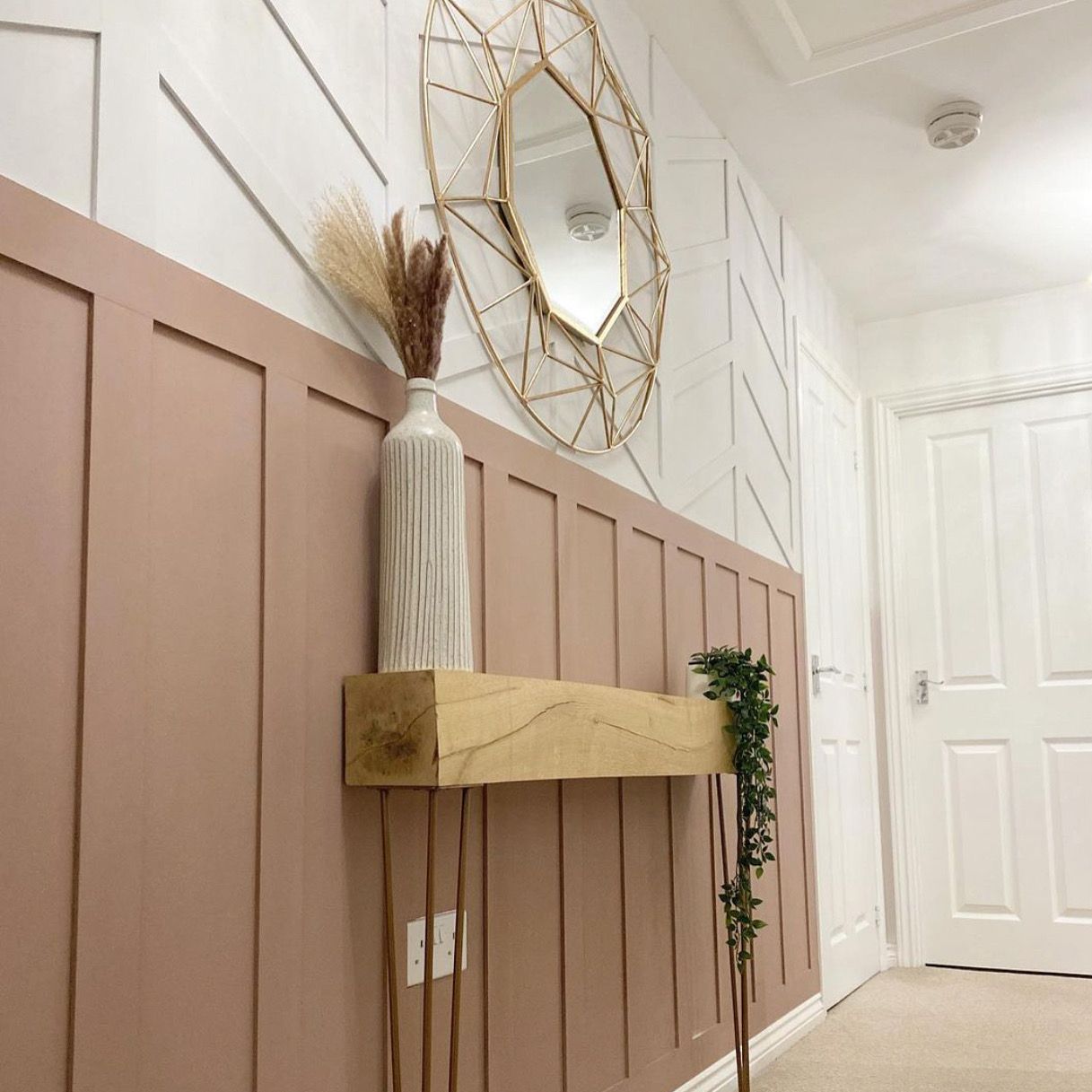
A Guide to WPC vs PVC Wall Panels
There are many wall covering materials on the market now, among which WPC wall panels and PVC wall panels are currently more common. So here comes the question, do you know the difference between WPC wall panels and PVC wall panels? Let me give you a brief introduction.
First, the raw materials are different. For example, WPC wall panel is made of wood fiber and polymer plastic by heating and extruding. It is an environmentally friendly material and has good weather resistance, while PVC wall panel is made of PVC material, which is light in weight, weather-resistant and acid-resistant. It is weakly alkaline, but has a certain hardness. The uses are also different, wood-plastic boards are used for outdoor decoration, while PVC wall panels are used for packaging and indoors.
There are numerous similarities and distinctions between PVC wall panels and WPC wall panels. They are all plastic-based synthetic materials. PVC, or polyvinyl chloride, is used to create PVC wall panels, as the name implies. Composite boards, on the other hand, contain different types of plastic, possibly including polyethylene or polypropylene, as well as wood or bamboo powder. Laminates containing wood flour are also known as WPC or wood plastic composite panels. Following are some of the differences between PVC wall panel and WPC wall panel.
Related Articles
WPC Wall Panel: Blending Elegance, Functionality and Innovation
PVC Wall Panel: Beautiful and Functional Interior Decoration
I. The detailed difference between WPC wall panel and PVC wall panel
1. Material composition
WPC wall panels are made from a combination of wood fibers and thermoplastics. However, PVC wall panel is made of 100% rigid plastic and PVC resin (polyvinyl chloride). The wood fibers used in WPC wall panels are usually recycled wood, while the plastic resin is made from virgin PVC.
2. Appearance and beauty
WPC wall panel has a more natural wood look with distinct grain and texture. However, PVC wall panel has a smooth, glossy finish with no visible grain, giving it a more plastic-like appearance.
PVC wall panels exhibit synthetic homogeneity and are less attractive, aesthetically and tactile. Since WPC wall panel contains wood chips, it has real wood grain engravings and imprints, giving more natural, realistic colors and a more aesthetically pleasing appearance.
3. Installation method
WPC wall panel can be installed using a variety of methods, including tongue and groove, clips and screws, and adhesives. However, PVC wall panel is easier to install than WPC wall panel because they are usually installed using only adhesives.
4. Easy to install and use
With greater flexibility, wood-plastic composites can be easily bent, routed and torn to fit the contours of any space. On the other hand, you cannot route the edges of the PVC wall panels, and require more tools to make any modifications. Therefore, if you want to fit the panels perfectly into the available space, you need to give preference to WPC wall panels.
5. Thickness
WPC wall panel is thicker than PVC wall panel, which makes them more durable and impact resistant. WPC (Wood Plastic Composite) wall panel also comes in various thicknesses, depending on the manufacturer and intended use. Common thicknesses of WPC wall panel include:
– 8mm: Suitable for indoor residential and commercial applications such as living rooms, bedrooms and offices. This thickness provides a good balance between durability and economy.
– 10mm: A stronger option that offers greater durability and insulation. These are typically used in commercial or high traffic residential areas where higher wear resistance is required.
– 12mm: These panels are designed for heavy duty applications requiring extra strength and durability, such as exterior cladding or commercial environments.
– 15mm: The thickest panels are typically used for special applications requiring extreme durability and insulation, such as the facades of buildings or other demanding environments.
Note that these are general guidelines and specific products may vary. It is imperative to select the proper thickness for your specific application and consult the manufacturer for recommendations.
However, PVC (polyvinyl chloride) siding comes in a variety of thicknesses, depending on its intended use and specific product. Common thicknesses of PVC wall panel include:
– 5mm: Commonly used in interior residential and commercial applications such as bathrooms and kitchens. This thickness provides a balance of durability, cost-effectiveness and ease of installation.
– 8mm: A slightly thicker option for greater durability and insulation. These are typically used in commercial or high traffic residential areas where higher wear resistance is required.
– 10mm: These panels are designed for heavy-duty applications such as industrial or commercial environments where extra strength and durability is required.
– 12mm: The thickest panel is typically used for special applications requiring extreme durability and insulation, such as cold storage facilities or industrial environments.
Keep in mind these are general guidelines and specific products may vary. It is important to select the proper thickness for your specific application and to consult the manufacturer for recommendations.

6. Weight
WPC wall panel is heavier than PVC wall panel, which makes them more difficult to install. However, PVC wall panel is lighter than WPC wall panel and therefore easier to install.
7. Fire performance
Both WPC and PVC wall panel are fire resistant, but WPC wall panels are more fire and heat resistant. However, PVC wall panel is less fire resistant than WPC wall panel because PVC has a lower ignition point.
8. Anti-UV
WPC wall panel is more resistant to UV radiation than PVC wall panel, which makes them ideal for outdoor applications. However, PVC wall panel is less UV resistant than WPC wall panel, but it is not as prone to fading or discoloration as WPC.
9. Moisture-proof and waterproof
Due to the presence of wood fibers, WPC wall panel is more water-resistant than PVC wall panel, absorbing moisture and resisting deformation, which makes them ideal for use in high-humidity environments. However, PVC wall panel is also waterproof, but not hygroscopic.
10. Chemical resistance
WPC wall panel is less resistant to chemicals as they can be damaged by certain chemicals. However, PVC wall panel is more resistant to chemicals than WPC wall panel, which makes them ideal for use in industrial and laboratory environments.
11. Scratch resistant
WPC wall panels are less scratch resistant than PVC wall panels. However, PVC wall panel is more scratch resistant than WPC siding.
12. Anti-Termite
WPC wall panel is more termite resistant than PVC wall panel. However, PVC wall panel is less resistant to termites than WPC wall panel.
13. Waterproof and moisture-proof
Both WPC wall panels and PVC wall panels have excellent moisture-proof and waterproof performance. Since WPC wall panel also resists temperature changes better and does not expand or contract with temperature changes, it is even better than PVC wall panel when used in wet conditions.
14. Non-slip
WPC wall panel has better slip resistance due to its built-in wood grain. If your deck is located in a rainy area or is exposed to water, you should prefer WPC wall panels as they reduce the risk of slips, accidents and falls.
15. Mildew resistance
PVC wall panel is more resistant to mold and mildew than WPC wall panel.

16. Impact resistance
WPC wall panel is more impact resistant than PVC wall panel.
17. Stain resistance
WPC wall panel is less stain resistant than PVC wall panel. However, PVC wall panel is more stain-resistant than WPC wall panel, which makes them easier to clean.
18. Strength and durability
WPC wall panel is stronger than PVC wall panel due to the presence of wood fibers, and WPC wall panel is more durable than PVC wall panel because they are less likely to crack or break. However, PVC wall panel is not as strong and durable as WPC wall panel, as they are more prone to cracking and warping.
19. Texture
WPC wall panel has a more natural wood grain than PVC wall panel.
20. Customization
WPC wall panels can be customized to meet specific design requirements. However, customization options for PVC wall panels are more limited.
21. Color options
PVC wall panels come in a wider range of colors than WPC wall panels.
22. Sound insulation
WPC wall panel provides better sound insulation than PVC wall panel, which makes it ideal for soundproofing applications.
23. Heat insulation
WPC wall panel has better insulating properties than PVC wall panel, which makes them ideal for use in colder climates. However, the insulation performance of PVC wall panel is lower than that of WPC wall panel.
24. Sustainability
WPC wall panel is a more sustainable option than PVC wall panel because they use wood fiber from sustainable forests.
25. Recyclability
Both WPC and PVC wall panel are recyclable, but WPC wall panel is easier to recycle due to the presence of wood fibers.

26. Environmental protection
WPC wall panel is considered more environmentally friendly than PVC wall pane because they are made from a mixture of wood fiber and plastic, which are recycled materials that can be recycled after use. However, PVC is made of 100% plastic.
27. Longevity
WPC wall panel lasts longer than PVC wall panel because they are less likely to crack or break.
28. Elasticity
WPC wall panel is more resilient than PVC wall panel because they can withstand more wear and tear.
29. Flexibility
PVC wall panel is more flexible than WPC wall panel, which makes them easier to install in curved or irregularly shaped spaces.
30. Maintenance
WPC wall panel requires more maintenance than PVC wall panel as they require regular cleaning and sealing to maintain their appearance and durability.
31. Cost
WPC wall panel is usually more expensive than PVC wall panel due to higher material costs. However, PVC wall panel is generally less expensive than WPC wall panel.
32. Linear extension/expansion
PVC wall panel does not contain any additives that help prevent linear expansion of the board and underlying molecules when heat is applied to the board. Therefore, long-chain molecules expand whenever they are affected by heat. Swelling can be very noticeable and can make working with the board dangerous.
WPC wall panel, on the other hand, consists of wood planks and plastic with certain additives to prevent expansion. Thus, they retain their length and structure even in the presence of heat and warmth for extended periods of time.
II. Conclusion
To sum up, both WPC and PVC wall panels have their unique advantages and disadvantages. When choosing a siding material, it is important to consider factors such as water resistance, fire resistance, maintenance requirements, cost, and environmental impact. Ultimately, the choice between WPC and PVC wall panels will depend on your specific needs and preferences. If you are undecided, please feel free to contact us.
Compared with PVC wall panels, WPC wall panels have several advantages. There are differences between the two types of plates due to the molecular level composition of the plates. WPC wall panels are more finely processed and also contain necessary additives that make them more useful even in adverse conditions.
So friends, I have tried to cover all the differences between WPC and PVC wall panel in this article. I hope this article will be helpful to you. If you learn something, be sure to share it with someone who might benefit from it. If I have missed any difference between WPC and PVC wall panel in this article or if you have any suggestion, you can mention it in the comments section.
Quick Quotation



